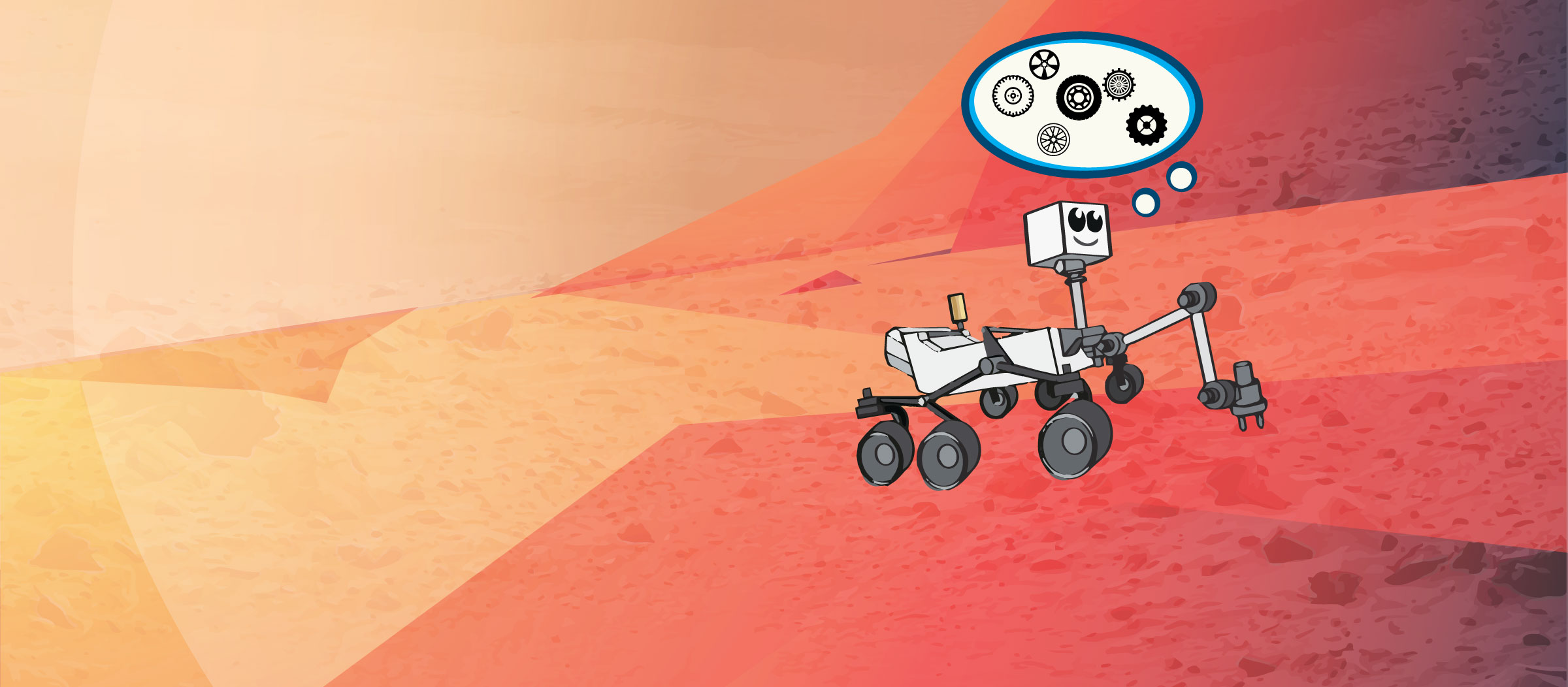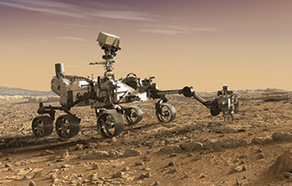


 The Mars Rovers
Perseverance Rover Wheels
Curiosity Rover Wheels
To Build a Wheel for Mars Podcast
Curiosity Wheel Damage: The Problem and Solutions
Reinventing the Wheel
The ATHLETE Rover
Mars Pathfinder and Sojourner
Mars Exploration Program
Interactive Mars
All About Mars
Ask NASA Mars!
Curiosity / Perseverance Wheels
Sojourner/ SpiritandOppy/ Curiosity Wheels
The Mars Rovers
Perseverance Rover Wheels
Curiosity Rover Wheels
To Build a Wheel for Mars Podcast
Curiosity Wheel Damage: The Problem and Solutions
Reinventing the Wheel
The ATHLETE Rover
Mars Pathfinder and Sojourner
Mars Exploration Program
Interactive Mars
All About Mars
Ask NASA Mars!
Curiosity / Perseverance Wheels
Sojourner/ SpiritandOppy/ Curiosity Wheels
What will the diameter, radius, and width of your wheel be? Wheels need to be big enough to drive over rocks, small enough to fit on a spacecraft, and strong enough to support all of the equipment on board. Perseverance, for example, weighs 2,260lb (1025kg) on Earth and can drive over rocks as tall as 31 inches.
NASA's Perseverance and Curiosity rovers have 6 identical wheels, which are all-wheel drive with a motor on each wheel. The front and rear wheels have steering capability. On your rover, will each wheel be the same or could different wheel designs improve your rover's performance? How many wheels will your rover have and why?
Research different materials you could potentially use for your wheel design. Historically, wheels have been made of aluminum because it is lightweight, performs well in the 100-degree daily temperature swings, and can provide some puncture and fatigue resistance. What will your wheel be made of? Would a typical car tire work on Mars? Why or why not?
Tread is the grooves, shapes, and patterns on a wheel's tire. (Also called grousers.) Tread is important for moving safely across Martian terrain. Curiosity has 24 chevron-pattern treads, while Perseverance has 48 gently curved treads intended to be more resistant to penetration while providing a firmer grip on the surface. Mars rover wheel treads have changed over the years, but why? What will the height, thickness, and shape of your tread be? How many treads will your wheel have and how will they be spaced out on your wheel?
If your wheel was "smart" what would that mean? Could you add sensors or cameras to help your wheels navigate tricky terrain or achieve better performance? How could added features help with navigational intelligence or preventative maintenance?
Think about all of the possibilities! Maybe your wheel can do its job of driving around Mars and do another one too. Think about what kind of additional functions a wheel might have. Could it help gather data, conduct scientific missions, or have mechanical functions that help a future astronaut like drilling, digging, or converting ice to water? There is no limit to what your wheel might do! Check out the ATHLETE rover video for inspiration about multi-function wheels.


The “Reinvent the Wheel” Challenge is presented in support of NASA’s Planetary Science Division. The Perseverance rover is a robotic scientist weighing 2,260 pounds (1,025 kilograms). The rover’s astrobiology mission will search for signs of past microbial life. It will characterize the planet’s climate and geology, collect samples for future return to Earth, and pave the way for human exploration of the Red Planet. The spacecraft is targeted for a July 2020 launch and is expected to touch down on Mars in February 2021. The Mars 2020 Perseverance rover mission is part of a larger program that includes missions to the Moon as a way to prepare for human exploration of the Red Planet. Charged with returning astronauts to the Moon by 2024, NASA will establish a sustained human presence on and around the Moon by 2028 through NASA’s Artemis lunar exploration plans.
Thank you for your interest in contacting Future Engineers. We look forward to connecting with you!
General Inquiries
support@futureengineers.orgSponsorship Inquiries
sponsor@futureengineers.org